Author Aswin Chandarr – The AI and Cognitive Robotics Expert
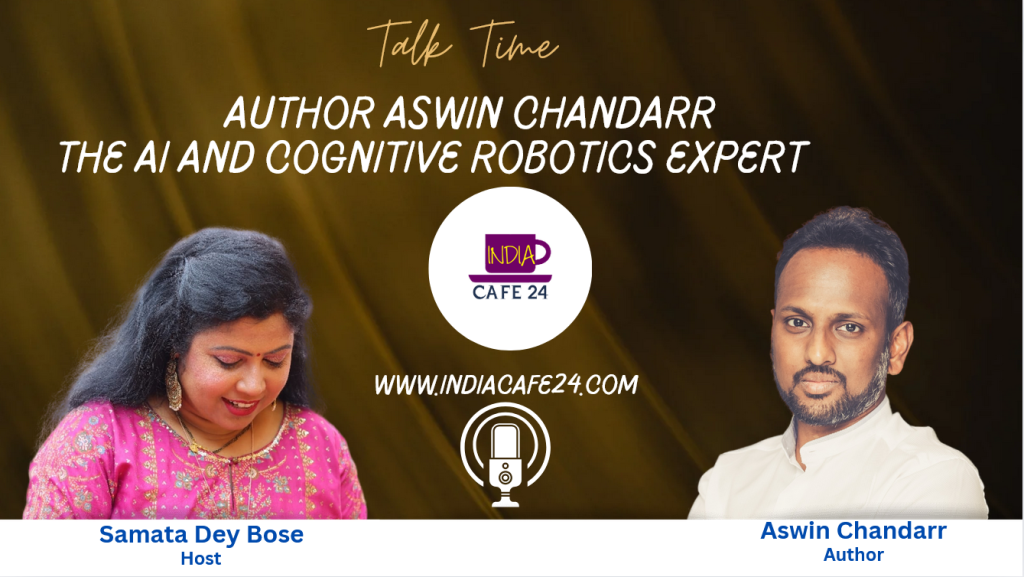
AI or Artificial Intelligence is talking charge of almost every activities or work that till few years back used to be called as human job. Being part of the writing industry I felt the hit of this techno term. Author Aswin Chandarr latest book on this subject excited me to go for a chit chat session to know more about his journey, the book and the impact of AI on the Human lives. Lets dive to know what he said.
Hello Mr. Aswin Chandarr, Welcome to this interview session @indiacafe24. Before we go ahead, we will insist you to say something about you, your family, and your life in school.
Thank you for having me @indiacafe24!
Well, where do I start? I’ve been deeply immersed in AI and cognitive robotics for quite a while now—long before AI became the buzzword it is today. My journey took me to the Netherlands, where I earned my PhD in AI cognitive robotics, diving into the fascinating world of teaching machines to think (or at least making them pretend to).
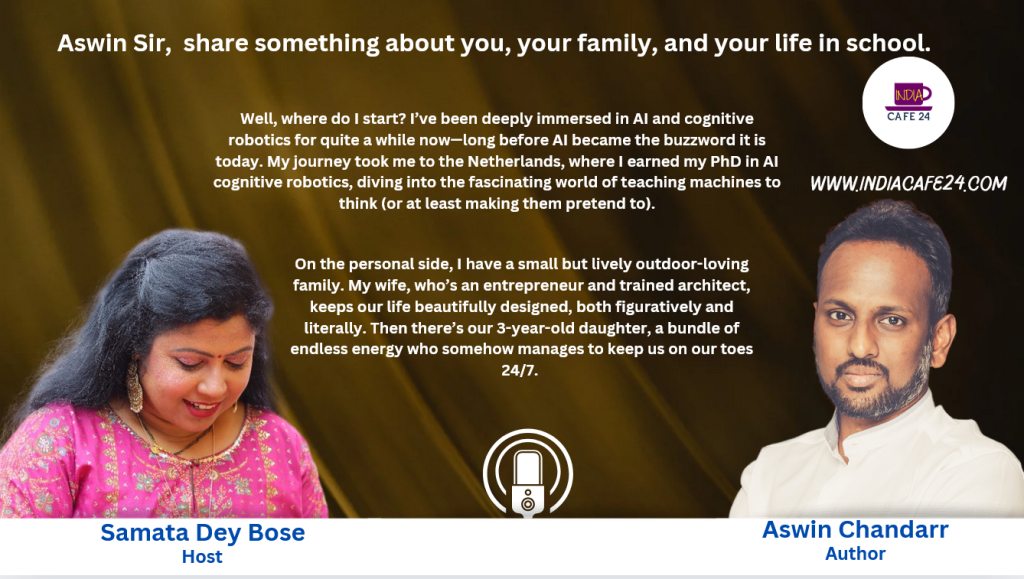
On the personal side, I have a small but lively outdoor-loving family. My wife, who’s an entrepreneur and trained architect, keeps our life beautifully designed, both figuratively and literally. Then there’s our 3-year-old daughter, a bundle of endless energy who somehow manages to keep us on our toes 24/7. We love exploring nature, whether it’s hiking in the wilderness or enjoying a peaceful day at a quiet beach—though, with my daughter around, “quiet” is always up for debate!
School life for me was a blend of genuine curiosity and the sheer joy of hanging out with friends. I was always good in most subjects, clearing them with relative ease but the real thrill was in those after-school chats about the latest mystery or sci-fi books. Remember, this was back in the day when the internet was still a luxury, so books were our gateway to new worlds and ideas. It’s funny how those childhood interests have come full circle now, with me working in a field that’s all about exploring the unknown.
All in all, life’s been a mix of curiosity, exploration, and a bit of madness—a combination I wouldn’t trade for anything.
You are the Visionary founder of The Global AI Transformation Institute, would like to know more about your pivotal platform?
Absolutely, I’d love to share more about the Global AI Transformation Institute, or as we affectionately call it, GAITI.
The idea behind GAITI was born out of a simple realization: AI is not just a trend, it’s a transformative force that’s going to impact every aspect of our lives—whether we’re ready for it or not. I wanted to create a platform that demystifies AI, making it accessible and understandable to everyone, from seasoned professionals to curious beginners.
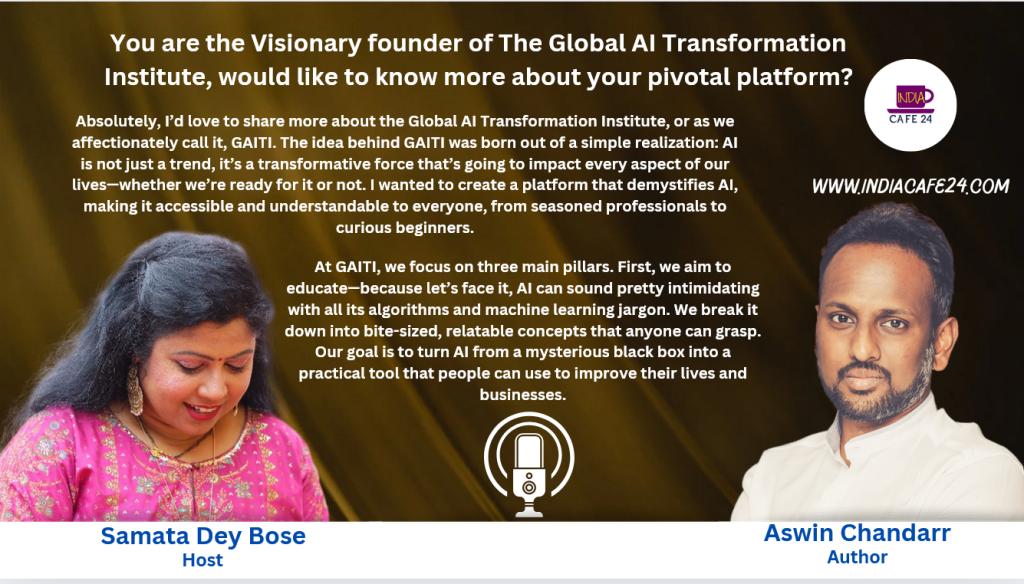
At GAITI, we focus on three main pillars. First, we aim to educate—because let’s face it, AI can sound pretty intimidating with all its algorithms and machine learning jargon. We break it down into bite-sized, relatable concepts that anyone can grasp. Our goal is to turn AI from a mysterious black box into a practical tool that people can use to improve their lives and businesses.
Second, we provide strategic consulting for organizations. We help them navigate the AI landscape, identifying how they can leverage AI to enhance their operations and stay competitive in a rapidly changing world. Think of us as your friendly AI tour guides—minus the tacky souvenir shops.
And third, we’re big on ethical AI. With great power comes great responsibility, right? We’re committed to ensuring that as AI evolves, it does so in a way that benefits humanity as a whole, without causing harm or increasing inequality.
In short, GAITI is all about empowering people and organizations to not just adapt to AI, but to thrive with it. We’re here to make sure that as AI transforms the world, we as humanity are steering the ship in the right direction.
Your latest published book is titled ” Inevitable AI: Art of Growth with Generative Intelligence ” and it talks about transformative potential of artificial intelligence (AI) – Can you put some light on the content of your book in brief?
Sure! “Inevitable AI: Art of Growth with Generative Intelligence” is my attempt to take readers on a journey through the fascinating and sometimes mind-bending world of AI. But don’t worry—I’ve left out the dense technical jargon and focused on what really matters: how AI is going to change our lives, our jobs, and our future.
The book is divided into a few key sections. First, I explore the basics—what AI really is, and why the recent advancements are such a big deal. I use a lot of storytelling and analogies to make these concepts easy to grasp, even if you’re not a tech expert. Think of it as AI 101, but with a little more flair.
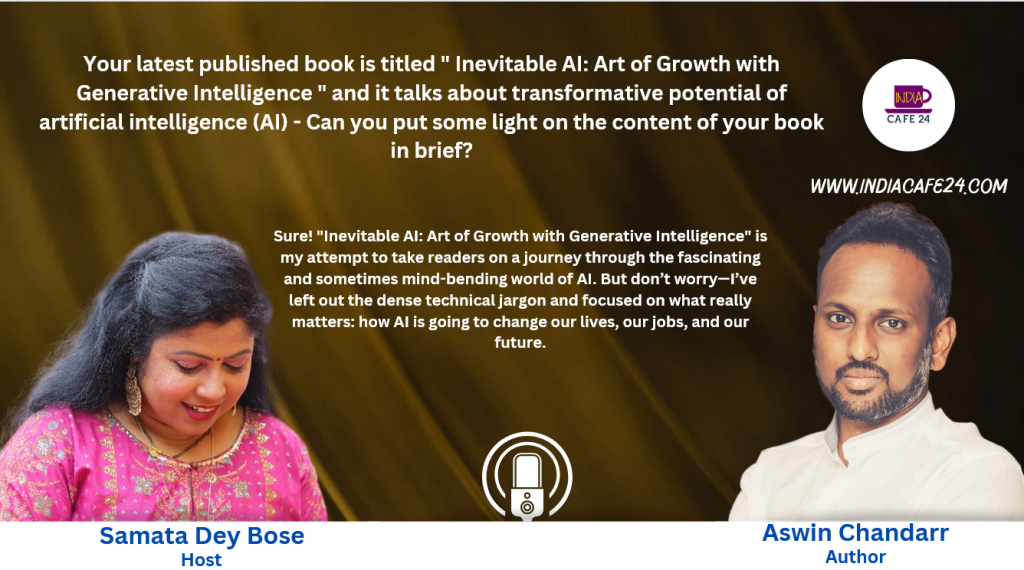
Next, I dive into the transformative potential of AI, especially the newer developments in generative intelligence. This is where things get really exciting. Imagine a world where AI can help you create, design, and innovate like never before. From inventing new products to solving complex problems, AI is set to become a powerful tool in our creative arsenal.
But it’s not all sunshine and rainbows. I also tackle the ethical dilemmas and risks that come with AI’s rise—like job displacement, privacy concerns, and the potential misuse of AI technologies. It’s a bit like fire: it can cook your food or burn down your house, depending on how you use it.
In short, the book is about understanding AI’s potential, both the good and the not-so-good, and figuring out how we can harness this technology to grow and thrive in the future. Whether you’re an entrepreneur, a professional, or just someone curious about the future, “Inevitable AI” is meant to give you the big picture—and maybe even a little inspiration along the way.
As a layman if I ask you what good and bad AI did, for the content industry in specific…. what will be your answer?
An Important question! Let’s break it down into the good, the bad, and maybe a little bit of the in-between.
The Good: AI has been a game-changer for the content industry. Imagine having a super-smart assistant who’s always ready to help you brainstorm, write, edit, and even create visuals. AI tools can take a rough idea and turn it into polished content, whether it’s a blog post, social media update, or video script. This has made content creation faster, more efficient, and sometimes even more creative. Need a catchy headline or a quick graphic? AI’s got your back.
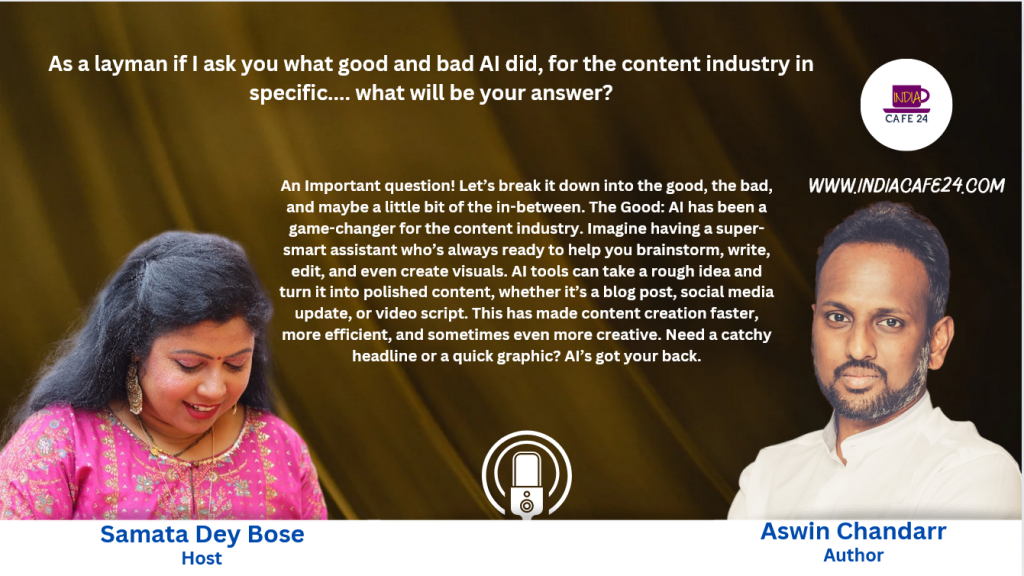
Plus, AI can analyze massive amounts of data to figure out what kind of content resonates with your audience. It helps creators tailor their work to meet audience demands, leading to more engagement and, let’s be honest, more clicks and likes. So, in a nutshell, AI has made content creation and distribution smarter, faster, and more targeted.
The Bad: But it’s not all smooth sailing. The flip side is that AI can sometimes lead to content overload. With so many AI-generated articles, videos, and social media posts flooding the internet, it can be hard to stand out. There’s also the risk of losing that human touch—AI might be good at generating content, but it can lack the nuance, emotion, and creativity that human creators bring to the table.
And then there’s the whole issue of originality. Since AI can blend and remix existing content, there’s a concern about copyright and intellectual property. If everyone’s using AI to create similar content, where does originality fit in?
The key is to use AI as a tool, not a replacement. It’s fantastic for handling repetitive tasks and providing inspiration, but the human touch—those personal experiences, emotions, and nuances—remains irreplaceable. So, while AI can write a decent article, it’s up to us to add the heart, soul and authenticity.
Certainly! Let’s dive a bit deeper into this important topic.
Artificial intelligence (AI) and robotics – Is wiping out the roles which were only done and executed by humans…. Is it true? Or is there something still unknown to the public?
The notion that AI and robotics are wiping out human roles isn’t entirely wrong, but it’s also not the full story. What’s happening is more of an evolution—a transformation in how work is done, rather than a complete eradication of human involvement.
The Truth: It’s undeniable that AI and robots are taking over many tasks that were once the sole domain of humans. This is particularly true for jobs that involve repetitive, routine tasks—whether it’s on the factory floor, in the warehouse, or even in offices. For instance, AI can now handle customer service inquiries through chatbots, analyze vast amounts of data in seconds, and even assist in legal document reviews. Robots are doing everything from assembling cars to sorting packages with speed and precision that humans simply can’t match. In these areas, we’re seeing a reduction in the number of human workers needed, as machines can often do the job faster, more efficiently, and without fatigue.
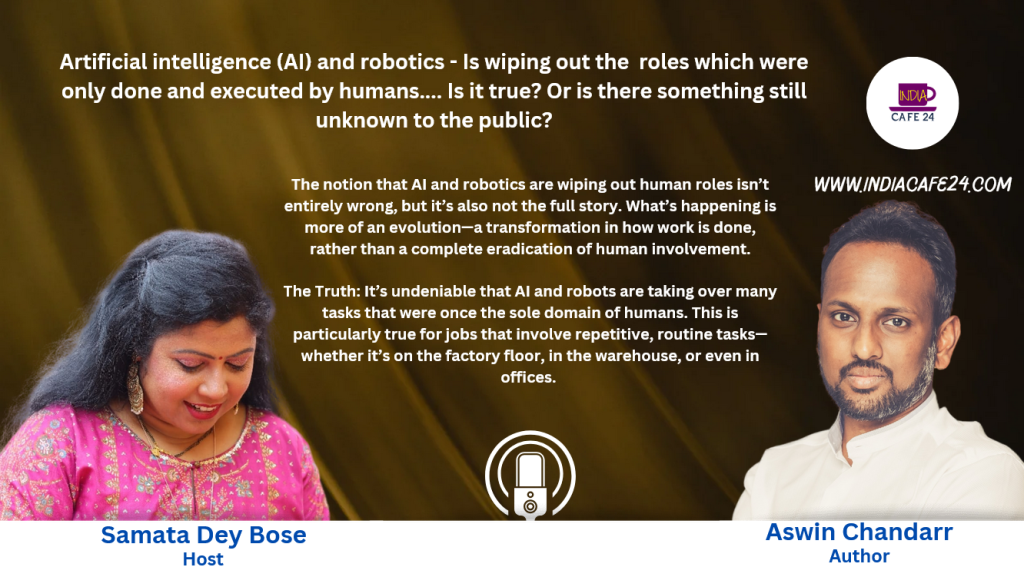
The Unknown and Overlooked: However, what’s less talked about is the flip side—AI and robotics are also creating new opportunities and roles that didn’t exist before. These technologies are not just about replacing human labor; they’re about augmenting it. While AI can mimic certain human behaviors, it still lacks the ability to fully replicate human creativity, empathy, and complex problem-solving skills. Jobs that involve deep interpersonal interactions, creative design, or complex decision-making are far from being replaced by AI. In fact, these areas might see growth as the need for human oversight and the ability to integrate AI into various fields becomes more crucial.
The Bigger Picture: What we’re seeing is a shift in the job market—a move away from repetitive, manual tasks towards roles that require more abstract thinking and human interaction. This means that the workforce of the future will need to be adaptable, continuously learning, and focused on developing skills that complement AI rather than compete with it.
As the nature of work changes, they’re not erasing the need for humans. Instead, they’re pushing us to evolve, to adapt, and to focus on what makes us uniquely human. The key is for us to recognize these shifts and prepare ourselves for the opportunities that lie ahead, rather than clinging to the jobs of the past. The challenge for society is to manage this transition in a way that minimizes disruption and maximizes the benefits for everyone.
Who are your target readers for this book or can it be well understood by any segment of readers?
“Inevitable AI” is written with a broad audience in mind, so while it’s particularly relevant for certain groups, I’ve tried to make it accessible to just about anyone who’s curious about the future of AI.
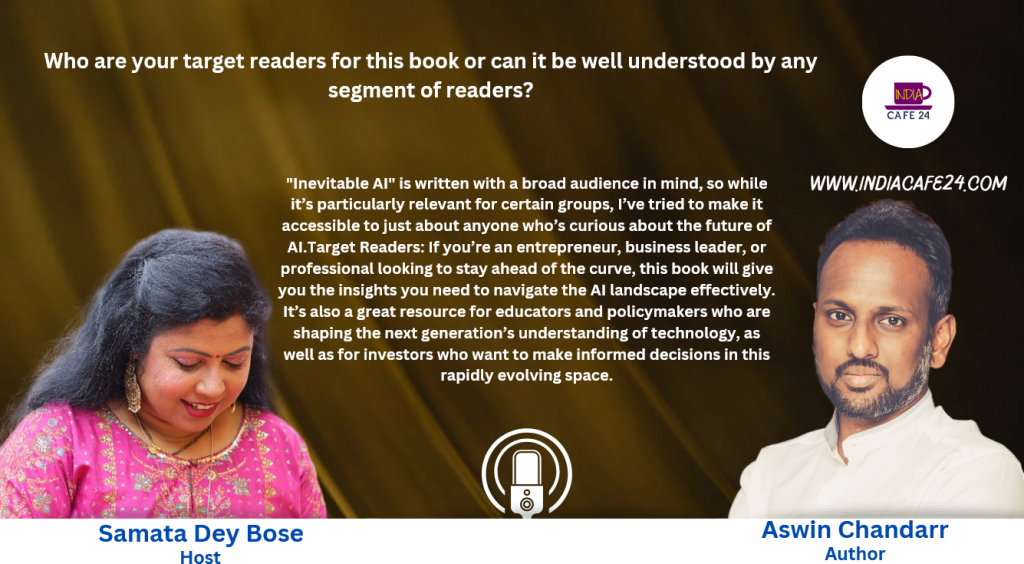
Target Readers: If you’re an entrepreneur, business leader, or professional looking to stay ahead of the curve, this book will give you the insights you need to navigate the AI landscape effectively. It’s also a great resource for educators and policymakers who are shaping the next generation’s understanding of technology, as well as for investors who want to make informed decisions in this rapidly evolving space.
For Everyone Else: But don’t worry—this book isn’t just for the tech-savvy or the business-minded. I’ve made sure that even if you don’t have a background in AI or technology, you’ll still find the content engaging and easy to grasp. I use a lot of storytelling, analogies, and real-world examples to break down complex concepts, so whether you’re a student, a creative, or just someone who’s curious about how AI will shape our world, there’s something here for you.
In short, “Inevitable AI” is designed to be understood by anyone who’s interested in the intersection of technology and society. Whether you’re looking to gain a competitive edge in your career, make sense of the buzz around AI, or simply get a glimpse of what the future might hold, this book has got you covered.
Would you like to try any other genre of writing for your upcoming books?
I’ve always been passionate about taking complex topics and translating them into a language that resonates with the intended audience. It’s kind of like being a tech whisperer—making sure that big, brainy ideas make sense to everyone, not just the experts.
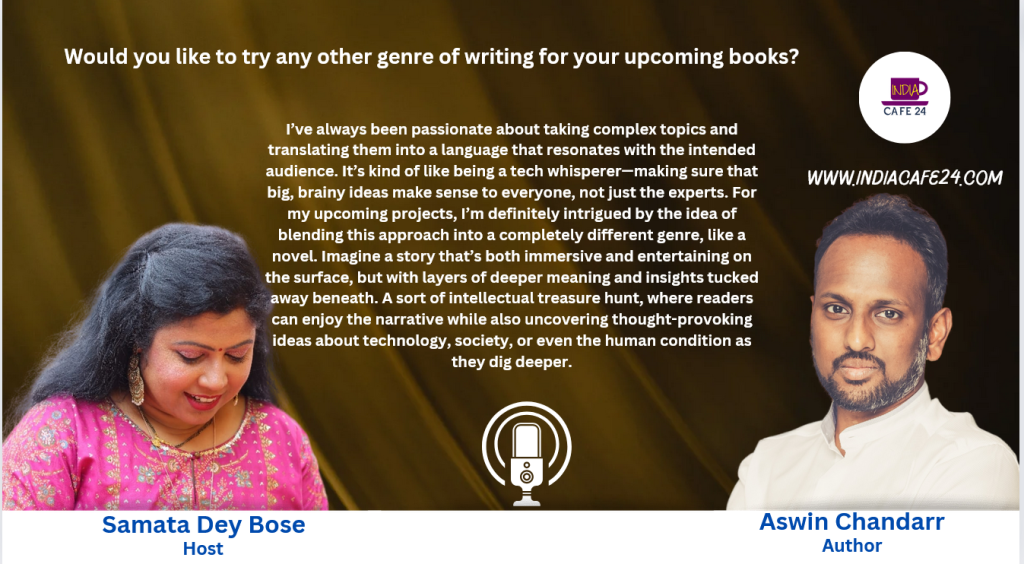
For my upcoming projects, I’m definitely intrigued by the idea of blending this approach into a completely different genre, like a novel. Imagine a story that’s both immersive and entertaining on the surface, but with layers of deeper meaning and insights tucked away beneath. A sort of intellectual treasure hunt, where readers can enjoy the narrative while also uncovering thought-provoking ideas about technology, society, or even the human condition as they dig deeper.
Philosophy and ethics are also calling to me. These are areas that naturally align with discussions about AI and technology, but they’re topics that can stand on their own as well. Exploring the ethical dilemmas and philosophical questions that come with our rapidly evolving world is something I’m excited to delve into more—maybe even in a way that challenges traditional perspectives or invites readers to see things from a new angle.
So, while I’m not straying too far from my love of making the complex understandable, I’m definitely open to experimenting with new genres and storytelling techniques to keep things fresh and engaging.
Who is the inspiration behind writing this book?
The inspiration behind writing this book is, without a doubt, my daughter, Ayra. As a parent, you start seeing the world through a different lens—thinking not just about the present, but about the future we’re shaping for the generations to come.
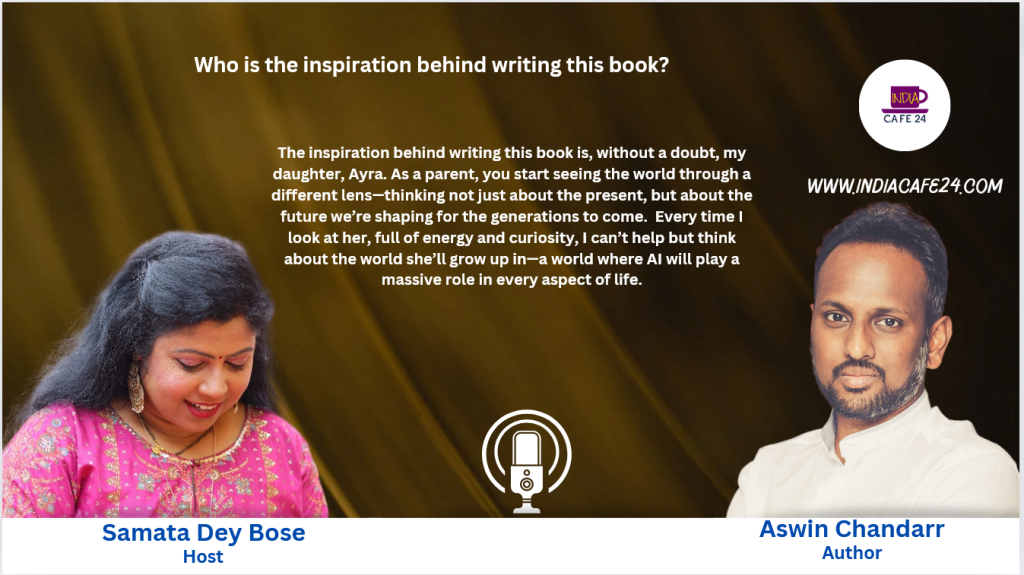
Every time I look at her, full of energy and curiosity, I can’t help but think about the world she’ll grow up in—a world where AI will play a massive role in every aspect of life. Writing this book was my way of contributing to that future, ensuring that we understand the power and potential of AI, but also the responsibilities that come with it. It’s about leaving behind a world where technology serves humanity in the best way possible, and where we’re prepared to face the challenges that come with it.
In a way, this book is a message to her and her generation—a guide to navigating the complex, AI-driven world they’ll inherit, and a reminder that even as technology evolves, it’s our values and ethics that will shape the future.
How many days did you invest to pen this book?
The core of the book came together in about three months—those were some pretty intense writing sessions! But as any writer will tell you, that’s just the beginning. It took another six months to really refine and polish the manuscript. This part involved reorganizing the content, getting feedback from my trusted first circle of readers, and making sure the ideas were as clear and impactful as possible.
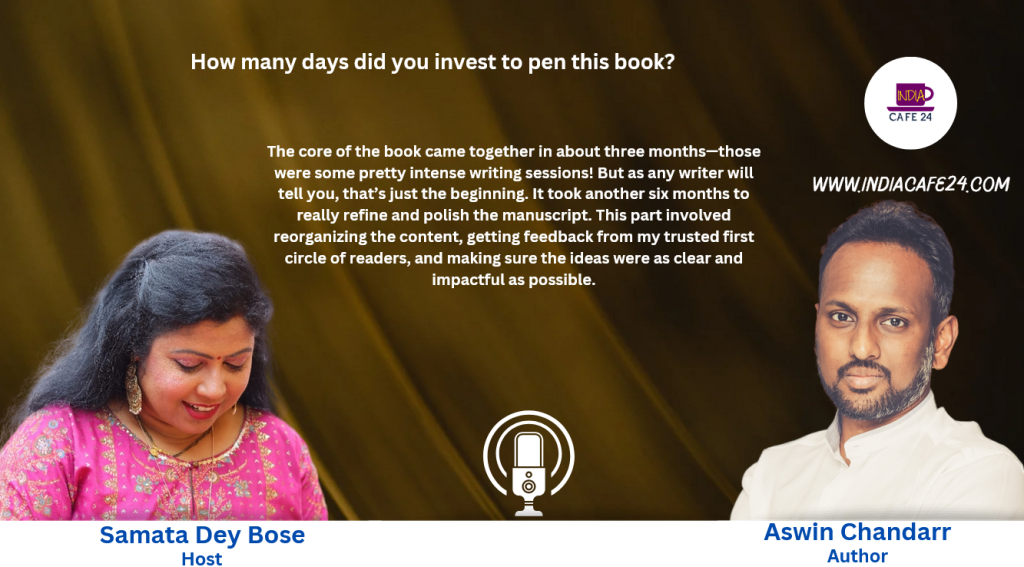
Then came the fun yet challenging task of finding the right title and book cover that truly captured the essence of the book. And of course, there was the editorial process, where every sentence was scrutinized to ensure the final product was as sharp and engaging as it could be. So, all in all, it was about nine months from start to finish—almost like bringing a new life into the world!
What type of books do you love to read and enjoy?
I’ve always been drawn to books that make me think deeply, challenge my perspectives, and sometimes even leave me questioning what I thought I knew. I enjoy reading a mix of genres, especially enjoy non-fiction books that delve into history, technology, and the human experience. There’s something incredibly satisfying about learning how past events shape our present and future, or how new technologies are changing the way we live and interact.
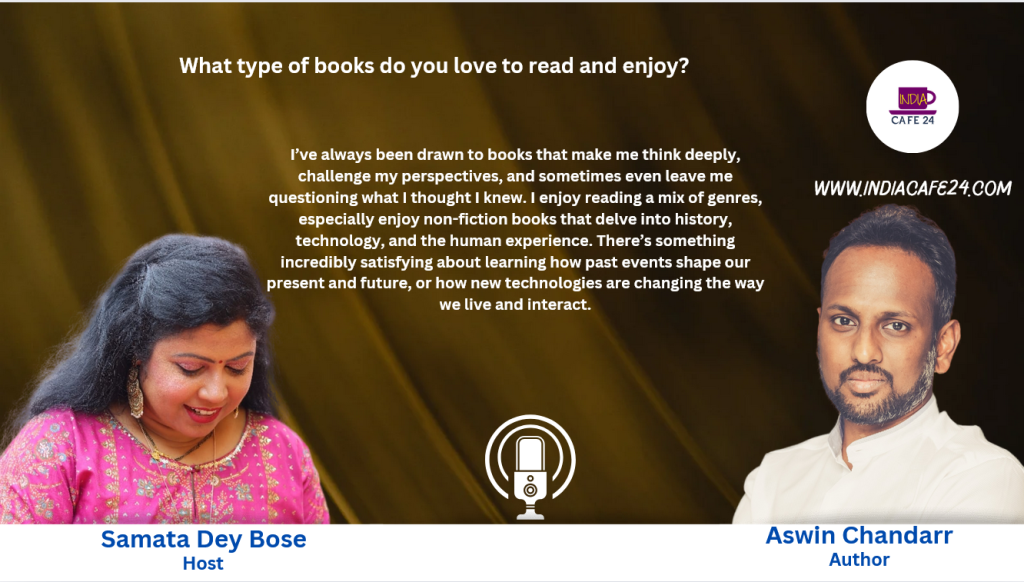
For example, I’m a big fan of Nassim Taleb’s Antifragile. It’s a brilliant exploration of how systems, and even people, can thrive under stress and uncertainty—something that’s incredibly relevant in our rapidly changing world. On the lighter, but equally thought-provoking side, I love Surely You’re Joking, Mr. Feynman! by Richard Feynman. His curious, almost playful approach to life and science is both inspiring and entertaining.
There’s something about exploring big ideas—whether it’s the nature of existence, ethics, or the future of humanity—that really captivates me. In short, I’m drawn to books that offer both intellectual stimulation and a bit of adventure
Who is your creative work’s best critique?
My best critic is, without a doubt, my wife. She has an incredible eye for detail and a knack for spotting things that others might miss—whether it’s a small inconsistency in the narrative or a phrase that just doesn’t quite hit the mark. As an entrepreneur and a trained architect, she brings a unique perspective to the table, combining creativity with practicality.
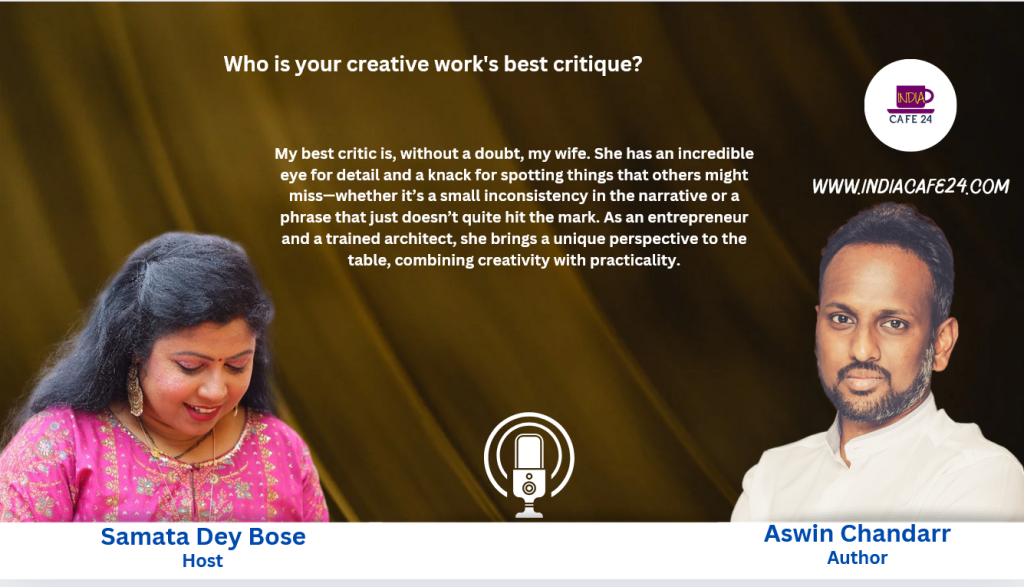
What’s great about having her as my critic is that she’s brutally honest, but always constructive. She doesn’t just point out what’s not working; she helps me think through how to make it better. Plus, because she’s not immersed in the world of AI and robotics like I am, she can provide feedback from the viewpoint of a general reader, which is invaluable.
It also helps that we’re a bit of a creative team at home. We often bounce ideas off each other, whether it’s about my writing or her architectural projects. Having someone who understands both the creative process and the importance of clear communication makes her the perfect sounding board for my work.
Who are your favorite authors/poets and why?
Wislawa Szymborska is a poet who has a special talent for making big ideas feel relatable and easy to understand. Her poems often explore deep themes like life, history, and human nature, but she does it in a way that feels light and accessible. What I love about her work is how she takes ordinary moments and shows us the deeper meaning hidden within them, making the everyday feel truly extraordinary.
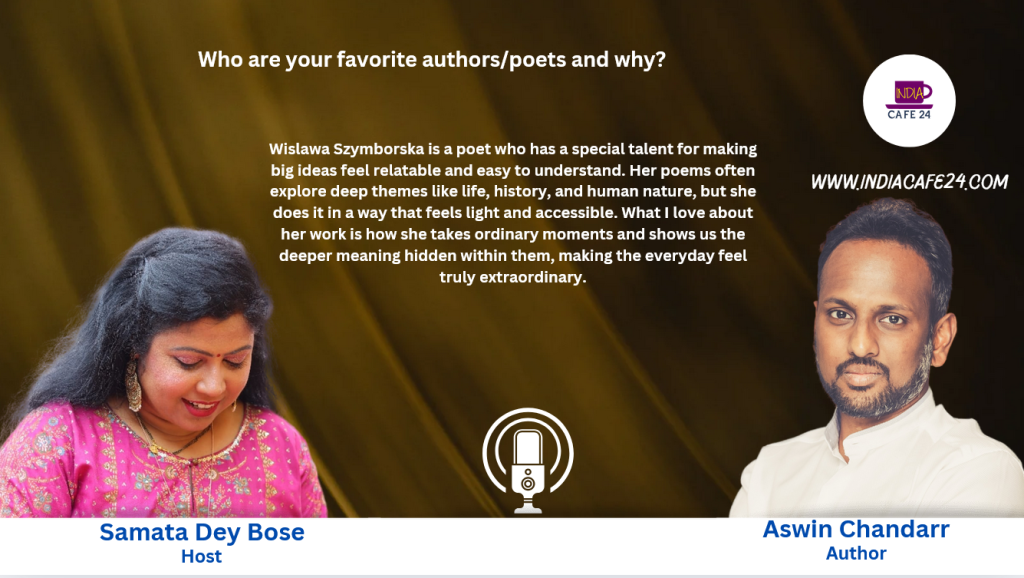
One thing that stands out in Szymborska’s poetry is her use of irony and gentle humor. She tackles serious subjects but does so with a tone that invites you in rather than pushing you away. For example, in her poem “The Joy of Writing,” she compares the act of writing to the power of creation, questioning what it means to bring something to life through words. It’s a thought-provoking idea, but she presents it in a way that’s easy to follow and enjoy.
Szymborska’s poems also show a deep understanding and empathy for the human experience. She doesn’t shy away from the challenges and uncertainties of life, but she approaches them with a kind and thoughtful perspective. Her work leaves you thinking about life in new ways, and her ability to blend simplicity with deep meaning is what makes her poetry so special and lasting.
Describe Author Aswin Chandarr in One line.
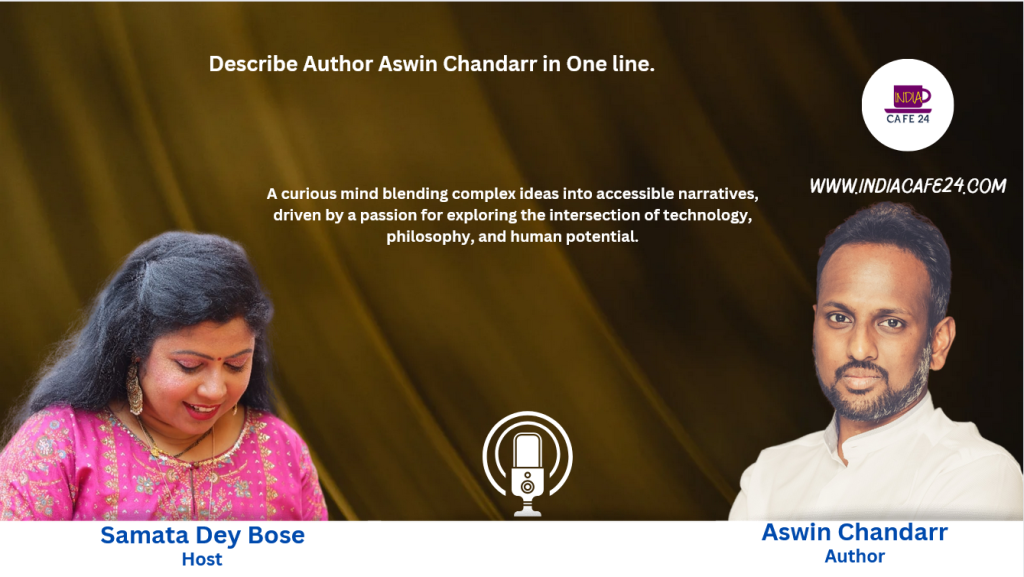
A curious mind blending complex ideas into accessible narratives, driven by a passion for exploring the intersection of technology, philosophy, and human potential.
This post is a part of Blogchatter Half Marathon 2024

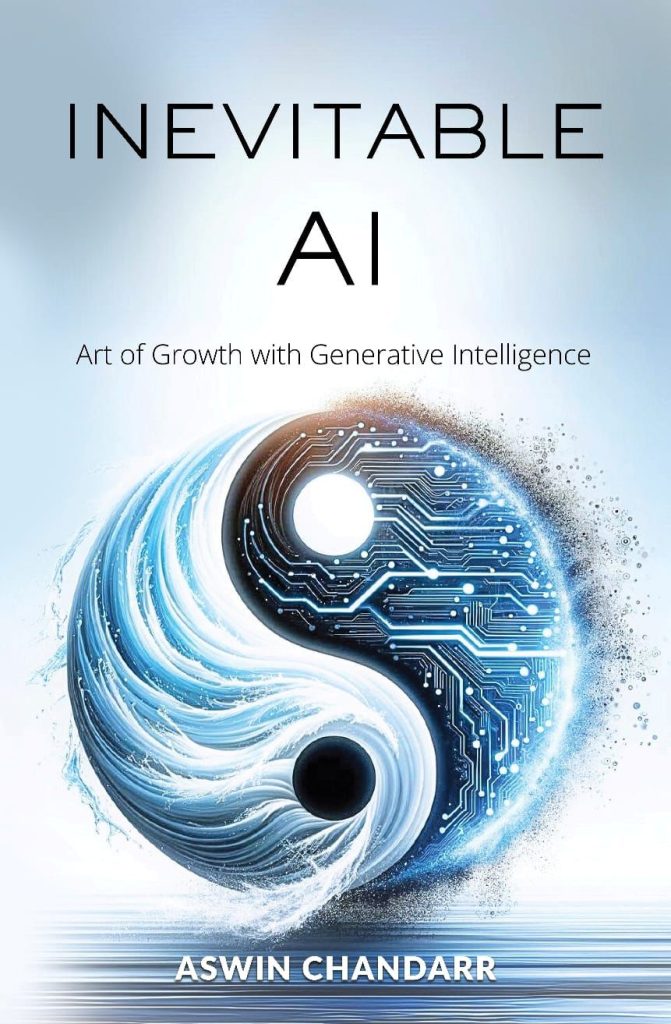
This was such a great interview – loved the questions you have posed to Aswin, Samata. His book reminds me of a recent AI related book I read called Code Dependent: Living in the Shadow of AI by Madhumita Murgia. It too explored the human cost of AI and tech. A fascinating read.